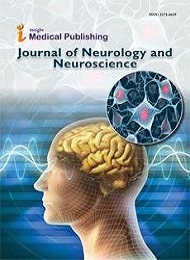Theme: Challenges Pioneering Discoveries and Future Directions in Neuroscience
Neuroscience Congress-2024
- Welcome Message
- About Conferences
- Sessions And Tracks
- Why To Attend?
- Benifits Of Participation
- Market Analysis
- Visa Trip Advisor
Welcome to the "19th Annual congress on Neuroscience". We're delighted to welcome experts and enthusiasts alike to this pivotal event where we converge to explore the frontiers of neuroscience. Together, let's delve into the complexities of the human mind, exchange ideas, and foster collaborations that hold the potential to transform lives. With your participation, we aim to chart new paths toward understanding, treatment, and support for those affected by neurological and psychiatric conditions. Welcome, and let's embark on this journey of discovery and innovation together.
Welcome to the premier gathering at the crossroads of “19th Annual Congress on Neuroscience on November 25-26, in Paris, France. The Main theme of our conference is “Pioneering Discoveries and Future Directions in Neuroscience” which is a nexus of knowledge, compassion, and progress, where experts and enthusiasts convene to explore the frontiers of brain science and mental health care. Through engaging discussions, ground-breaking research presentations, and hands-on workshops, we aim to catalyse innovation and foster collaboration in our collective mission to advance the understanding, diagnosis, and treatment of Neurological disorders. Join us as we unite to break down barriers, ignite change, and shape the future of mental wellness for generations to com
Neurobiology and Neurophysiology
Neurobiology is the study of the biology of the nervous system. It encompasses the molecular, cellular, and systemic aspects of nervous system function, including how neurons communicate, the role of neurotransmitters, and the structure and function of neural circuits. Neurobiologists investigate how these components contribute to behaviors, cognition, and neurological diseases. Key areas of research include synaptic transmission, neural plasticity, brain development, and the genetic basis of neural function.
Neurophysiology focuses on the functions and activities of the nervous system. It examines how electrical and chemical signals in the brain and nervous system regulate bodily functions, behaviors, and cognitive processes. Neurophysiologists study the mechanisms underlying sensory perception, motor control, and higher cognitive functions such as learning and memory. Techniques like electrophysiology, neuroimaging, and computational modeling are commonly used to understand these processes.
Together, neurobiology and neurophysiology provide a comprehensive understanding of how the nervous system operates at multiple levels, from molecules to behavior. This knowledge is crucial for developing treatments for neurological disorders and for advancing our understanding of the brain's complex functions.
Clinical Neuroscience
Clinical Neuroscience is a field that combines principles from neuroscience and clinical practice to understand, diagnose, and treat disorders of the nervous system. It involves the study of brain and nervous system function in the context of diseases and conditions such as Alzheimer's, Parkinson's, epilepsy, stroke, and psychiatric disorders like depression and schizophrenia. Clinical neuroscientists use techniques such as neuroimaging, electrophysiology, and molecular biology to investigate the underlying mechanisms of these disorders. They also focus on developing and testing new therapies, including medications, surgical interventions, and behavioural therapies. The ultimate goal of clinical neuroscience is to improve patient outcomes by translating basic research findings into effective clinical applications. This interdisciplinary approach ensures a comprehensive understanding of neurological diseases, enabling the development of innovative treatments and improving the quality of life for patients
Cognitive and Behavioral Neuroscience
Cognitive and Behavioral Neuroscience is a field that examines the neural mechanisms underlying cognitive functions and behaviors. It seeks to understand how brain processes such as perception, memory, attention, language, and decision-making are implemented at the neural level. Researchers in this field use techniques like neuroimaging, electrophysiology, and computational modeling to study brain activity and its correlation with cognitive tasks and behaviors. Behavioral neuroscience also explores how genetic, developmental, and environmental factors influence behavior and cognition. This interdisciplinary approach integrates insights from psychology, biology, and neuroscience to uncover how the brain supports complex mental functions and behaviors. Understanding these processes is crucial for addressing cognitive and behavioral disorders, enhancing educational strategies, and improving mental health interventions. The knowledge gained from cognitive and behavioral neuroscience helps in developing therapies and interventions to treat conditions like ADHD, autism, and anxiety disorders
Neurological Disorders and Treatments:
Neurological Disorders affect the nervous system, including the brain, spinal cord, and nerves. Common conditions include Alzheimer's disease, Parkinson's disease, epilepsy, multiple sclerosis, stroke, and migraines, as well as psychiatric disorders like depression and schizophrenia. Symptoms vary but often involve motor dysfunction, cognitive decline, sensory disturbances, and emotional issues.
Treatments depend on the disorder's nature and severity. They include medications to manage symptoms, such as antiepileptic drugs for epilepsy or dopaminergic agents for Parkinson's disease. Physical, occupational, and speech therapies help improve functionality and quality of life. In some cases, surgical interventions, such as deep brain stimulation or aneurysm repair, are necessary. Emerging treatments focus on gene therapy, neuroprotective agents, and stem cell therapy. Advances in neuroimaging and biomarkers are improving early diagnosis and personalized treatment approaches, aiming to enhance patient outcomes and management of these complex disorders.
Neuroimaging and Neuroinformatics
Computational Neuroscience
Computational Neuroscience is a field that uses mathematical models, simulations, and algorithms to understand the functioning of the nervous system. It aims to elucidate how neural circuits and brain processes give rise to cognition, behavior, and sensory experiences. By developing and analyzing models of neural systems, computational neuroscientists can simulate brain activity, predict responses to stimuli, and explore how neurons and networks interact.
This field combines insights from neuroscience, computer science, and mathematics to address complex questions about brain function. Techniques include modeling neural dynamics, analyzing large datasets from neuroimaging or electrophysiology, and developing algorithms for pattern recognition and learning. Computational neuroscience helps in understanding brain disorders, guiding experimental research, and developing new technologies like brain-computer interfaces. Ultimately, it provides a quantitative framework for studying neural processes, contributing to both fundamental research and practical applications in neuroscience.
Neurotics and Public Policy
Neuroethics and Public Policy explores the ethical, legal, and social implications of neuroscience research and its applications. Neuroethics examines issues such as the ethical use of neuroimaging, cognitive enhancement, and brain intervention techniques. It addresses concerns about privacy, consent, and the potential misuse of neuroscientific findings in areas like criminal justice or personal autonomy.
Special Sessions and Workshops
- Emerging Trends in Neuroscience: Focus on the latest trends and emerging areas in neuroscience research.
- Innovative Research Techniques: Learn about new and innovative techniques in neuroscience research.
- Interdisciplinary Approaches: Discuss the importance of interdisciplinary approaches to solving complex neuroscience problems.
- Professional Development and Career Guidance: Participate in sessions designed to provide professional development and career
- guidance.
Poster Sessions
- Showcase of Cutting-Edge Research: View posters showcasing the latest research in neuroscience.
- Interactive Discussions with Researchers: Engage in discussions with researchers about their work.
- Young Investigator Presentations: Support and learn from presentations by young investigators in the field.
- Award Competitions and Recognitions: Participate in and celebrate award competitions recognizing outstanding research.
Attending the Neuroscience Meet 2024 conference is essential for anyone involved in the field of Neuroscience. This gathering offers a unique platform to stay updated on the latest research, breakthroughs, and advancements in Neuroscience .Through engaging presentations, interactive sessions, and networking opportunities, attendees can expand their knowledge, exchange ideas, and establish valuable connections with peers and experts.
Who can attend?
The Neuroscience Meet 2024 conference welcomes a diverse audience researchers clinicians, healthcare professionals, educators, students, and industry representatives. With sessions tailored to various interests and expertise levels, attendees can engage in discussions, share insights, and stay updated on the latest advancements in the field.
Target Audience:
- Neurologists
- Neuroscientists
- Neuropsychologists
- Psychiatrists
- Neurosurgeons
- Neuroimaging Specialists
- Neuropharmacologists
- Cognitive Scientists
- Clinical Neurologists
- Biotechnologists
- Pharmaceutical Researchers
- Neuroengineers
- Academics and Educators
- Students and Trainees
- Healthcare Providers
- Policy Makers and Regulators
- Pharmaceutical and Medical Device Companies
Participation Benefits :
- Benefit from attending keynote presentations by esteemed researchers.
- Gain access to all sessions and networking opportunities.
- Receive global recognition for your research and profile.
- Get the opportunity to publish abstracts in international journals with unique DOIs.
- Obtain discounts for publishing articles in open-access journals.
- Receive handbooks and conference kits to enhance your experience.
- Network with prominent figures from around the globe.
- Learn and expand your knowledge from top professionals in the field.
- Receive certified participation for your abstracts.
- Establish global connections for your research ideas and professional growth.
Participation categories:
- Keynote Speaker: Share your insights as a prominent figure in the field in a 45-50 minute presentation.
- Speaker (Oral Presentation): Showcase your individual research or expertise in a 25-30 minute presentation.
- Speaker (Workshop): Provide interactive learning experiences in a 45-50 minute workshop.
- Speaker (Special Session): Contribute to a special session for 45-50 minutes alongside fellow experts.
- Speaker (Symposium): Collaborate with multiple presenters in a symposium lasting more than 45 minutes.
- Delegate (Registration Only): Access all sessions and benefits upon registration.
- Poster Presenter: Showcase your research through poster presentations and enjoy delegate benefits.
- Remote Attendance: Participate via video or e-poster presentation.
- Exhibitor: Display your company products through booked booths of varying sizes.
- Media Partner, Sponsor, and Collaborator: Collaborate with the event, offering support and visibility.
The 19th Annual Congress on Neuroscience, scheduled for November 25-26, 2024, in Paris, France, aims to bring together leading experts, researchers, clinicians, and industry professionals from around the world. The conference will focus on the latest advancements and future directions in the field of neuroscience, offering a platform for knowledge exchange, collaboration, and networking.
Market Context:
1. Global Neuroscience Market Overview:
- Current Market Size: As of 2023, the global neuroscience market is valued at approximately $30 billion.
- Growth Projections: Expected to grow at a CAGR of 5-7% from 2024 to 2030.
-
Key Drivers:
- Technological advancements in neuroimaging, neurostimulation, and neurosurgical techniques.
- Increasing prevalence of neurological disorders.
- Substantial investment in research and development.
- An aging global population susceptible to neurological conditions.
2. Relevance of the Congress:
- Knowledge Sharing: The congress will serve as a crucial platform for disseminating the latest research findings, technological advancements, and clinical practices in neuroscience.
- Networking Opportunities: Attendees will have the opportunity to network with leading experts, fostering collaborations that can drive innovation and research.
- Professional Development: Workshops, keynote addresses, and interactive sessions will offer valuable insights and learning opportunities for attendees at various stages of their careers.
3. Market Segmentation and Target Audience:
- Researchers and Academics: Looking to present and discuss cutting-edge research.
- Clinicians and Healthcare Professionals: Interested in the latest clinical practices and treatment modalities.
- Pharmaceutical and Medical Device Companies: Showcasing products, conducting market research, and exploring collaboration opportunities.
- Students and Early-Career Scientists: Gaining insights into the latest trends and networking with established professionals.
4. Regional Market Dynamics:
- North America and Europe: Leading in neuroscience research and technological advancements.
- Asia-Pacific: Rapidly growing market with increasing healthcare expenditure and research funding.
- Rest of the World: Gradual improvement in healthcare access and infrastructure, leading to increased focus on neurological health.
5. Key Themes and Sessions:
- Neurobiology and Neurophysiology: Cellular mechanisms, neural circuits, neurotransmitters.
- Clinical Neuroscience: Neurodegenerative disorders, epilepsy, neuropsychiatric disorders.
- Cognitive and Behavioral Neuroscience: Memory, learning, cognitive dysfunction.
- Neurological Disorders and Treatments: Stroke, multiple sclerosis, neurotrauma.
- Neuroimaging and Neuroinformatics: Advanced imaging techniques, brain mapping, AI in neuroscience.
- Neurogenetics and Neurodevelopment: Genetic basis of disorders, developmental neuroscience.
- Neuropharmacology and Therapeutics: Drug development, personalized medicine.
- Brain-Computer Interfaces: Technological advances, applications in neuroprosthetics.
- Neuroplasticity and Neural Regeneration: Mechanisms, therapeutic approaches.
- Pain and Sensory Neuroscience: Pain perception, chronic pain management.
- Computational Neuroscience: Neural modeling, data analysis.
- Neuroethics and Public Policy: Ethical issues, regulatory frameworks, public engagement.
6. Exhibitor and Sponsorship Opportunities:
- Exhibitors: Pharmaceutical companies, medical device manufacturers, research institutions, and healthcare providers.
- Sponsorship Tiers: Various levels of sponsorship offering visibility and engagement opportunities, such as keynote sponsorship, session sponsorship, and exhibition booths.
7. Trends and Innovations to Watch:
- Artificial Intelligence and Machine Learning: Enhancing diagnostics and treatment planning.
- Wearable Neurotechnology: Monitoring brain activity and neurological health.
- Regenerative Medicine: Stem cell therapies and neurogenesis.
- Telehealth and Remote Monitoring: Increasing accessibility to neurological care.
- Personalized Medicine: Tailoring treatments based on genetic profiles and individual patient data.
8. Challenges and Opportunities:
-
Challenges:
- High costs associated with advanced neurotechnologies.
- Regulatory hurdles in approving new treatments and devices.
- Limited awareness and access to neurological care in certain regions.
-
Opportunities:
- Collaboration between academia, industry, and healthcare providers.
- Development of cost-effective and scalable neurotechnologies.
- Increased funding and support for neurological research.
9. Impact on the Neuroscience Community:
The 19th Annual Congress on Neuroscience will significantly impact the global neuroscience community by fostering collaboration, promoting the latest research and innovations, and providing a platform for networking and professional growth. The insights and connections gained from this congress will drive advancements in understanding and treating neurological disorders, ultimately improving patient outcomes and quality of life.
Planning a trip to Paris, France? Attend our Meeting!
Issue with VISA?
To support participants in their VISA application process, we provide VISA support documents as follows:
1. Official Letter of Invitation
2. Official Letter of Abstract Acceptance
3. Receipt of Payment
Points to note:
- Visa Letter (official letter of invitation) will be issued only after successful registration and payment for the conference.
- Visa Letters can be issued only for the individual accepted to attend the conference.
- Please contact the Program Manager - Elena Hawkins, via neuropsychology@europeconferences.com to arrange for a Visa Letter.
Kindly provide us with the following information for Visa Letters:
- Your name as it appears on your passport
- Passport Scan Copy (passport number and date of birth)
- Abstract Acceptance letter
Payment Methods:
1. Payment Gateway - RAZORPAY
2. Bank-to-Bank transfer
Having trouble with registration?
Please contact Program Manager – Elena Hawkins via neuropsychology@europeconferences.com. The NEUROSCIENCE CONGRESS-2024 team will provide you with an INVOICE for the requested price, enabling you to make the Bank-to-Bank transfer.
Conference Highlights
- Neurobiology and Neurophysiology
- . Clinical Neuroscience
- Cognitive and Behavioral Neuroscience
- Neurological Disorders and Treatments
- Neuroimaging and Neuroinformatics
- Neurogenetics and Neurodevelopment
- . Neuropharmacology and Therapeutics
- Brain-Computer Interfaces
- Neuroplasticity and Neural Regeneration
- Pain and Sensory Neuroscience
- . Computational Neuroscience
- Neurotics and Public Policy
- Special Sessions and Workshops
To share your views and research, please click here to register for the Conference.
To Collaborate Scientific Professionals around the World
| Conference Date | November 25-26, 2024 | ||
| Sponsors & Exhibitors |
|
||
| Speaker Opportunity Closed | |||
| Poster Opportunity Closed | Click Here to View | ||
Useful Links
Special Issues
All accepted abstracts will be published in respective Our International Journals.
- International Journal of Neurorehabilitation
- Journal of Neurological Disorders Open Access
- Journal of Neurological Disorders
Abstracts will be provided with Digital Object Identifier by













